If you’re a regular Energy Miser reader, you know aesthetics matter as much to me as they do to our customers. My entire Shoddy Workmanship series focused on solar fashion don’ts. Almost every person considering solar asks me how the panels will look, but many don’t know to ask how and where the lesser known components of the system will be installed.
For example, what about the production meter, which measures how much energy your system has generated? Our preference at New England Clean Energy is to install the meter in your basement or garage, near the string inverter(s) or micro-inverter communications hardware:
Sometimes, though, that set up doesn’t work for reasons including the following.
1. Utility requirements: Some municipal light departments require the production meter to be outside the home, as in this system we installed in Wakefield, MA.
2. Lack of space: Some homes literally do not have the space for this supplementary equipment inside the home. This Harvard, MA home has no basement or garage. The electrical panel is in the living room, as you can see in the photos below. Given the options, mounting the meter — and the inverter — outside was the more aesthetically pleasing option in this case.
3. Leasing company requirements: This doesn’t apply with New England Clean Energy, but if you lease solar rather than purchase it, your meter and additional equipment will, most likely, be on the outside of your home. The reason is not particularly warm and fuzzy: the leasing companies want to be able to turn off the solar and lock out the system if the customer misses a payment. (This photo taken in Oxford, MA, shows what I believe is a system installed by Vivint.)
There you have it — the reasons why you’ll sometimes see a solar production meter on the outside of a home. Which do you prefer? Does it matter? Post a comment and let me know.
If you liked this article, you might also enjoy:


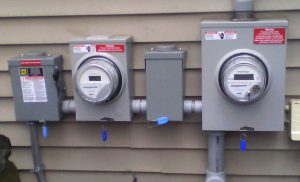
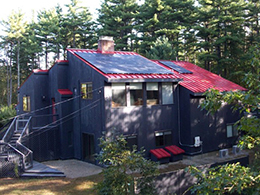
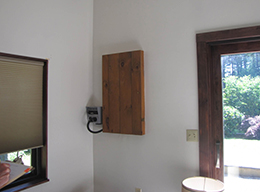
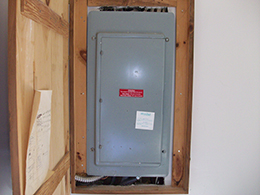

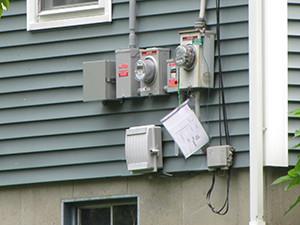
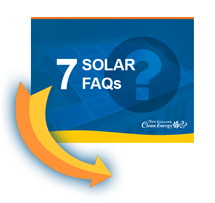 Download our 7 FAQs
Download our 7 FAQs

